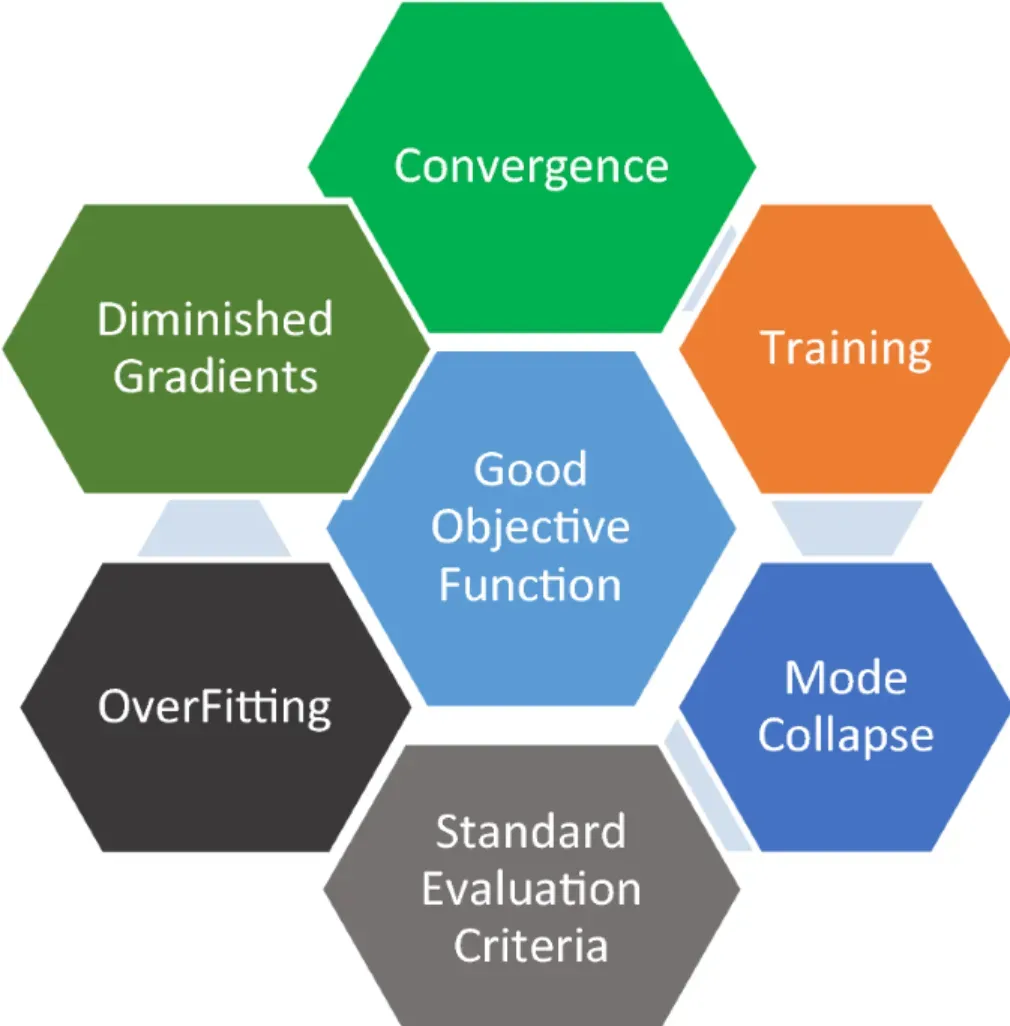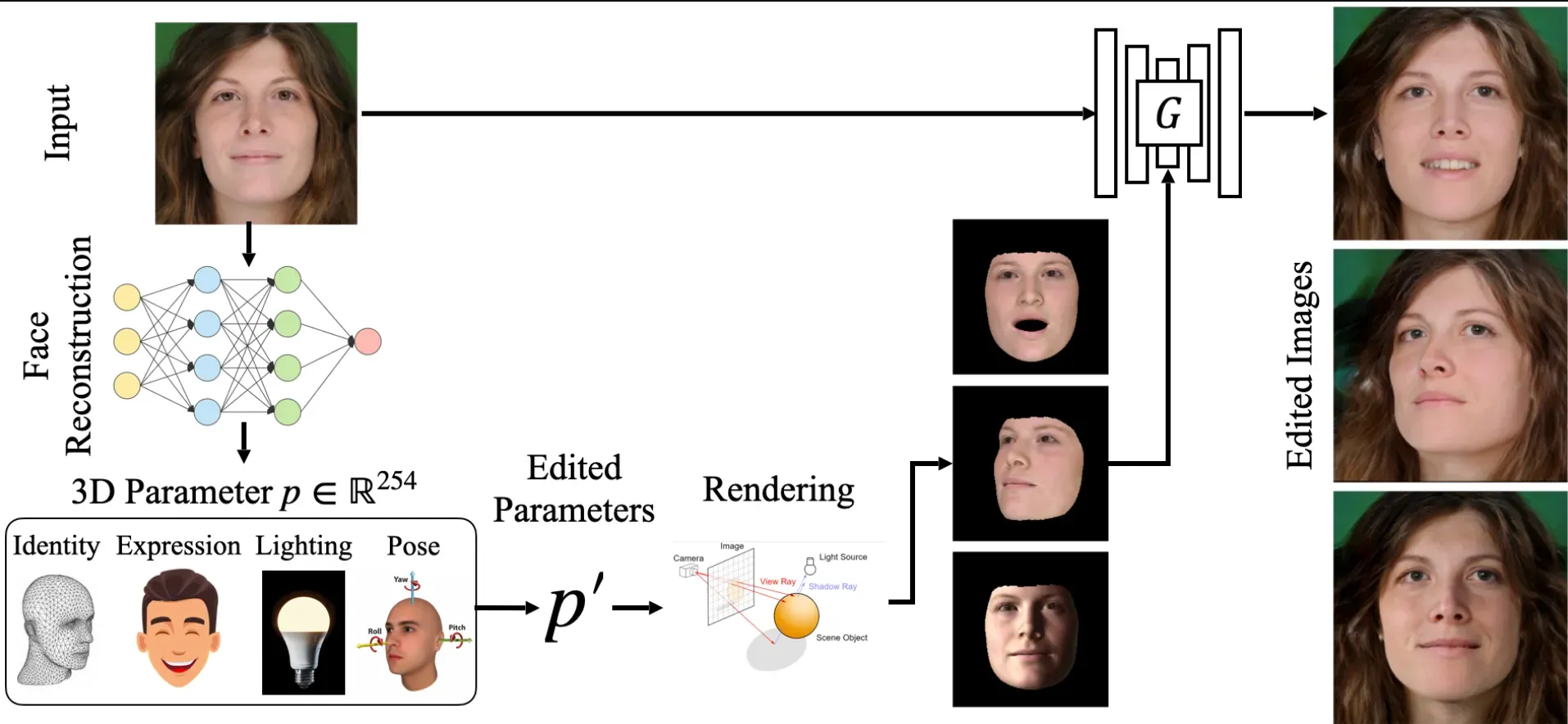What are Generative Adversarial Networks?
GANs are machine learning tools that generate new data instances that resemble your training data. But it's more complicated than that!
GANs are actually algorithmic architectures that use two neural networks, pitting one against the other ("adversarial") to generate new, synthetic instances of data that can pass for real data. They're used widely in things like image, video, and voice generation.
For example, GANs can create images that look like photographs of human faces, even though the faces don't belong to any real person.
Why are Generative Adversarial Networks Used?
Generative Adversarial Networks (GANs) are used for a variety of reasons. Here are some key points explaining their use:

Data Generation
GANs are utilized to generate synthetic data that resembles real data, helping to overcome issues of data scarcity or high data collection costs.
Realism
GANs can generate highly realistic data instances, such as images, videos, and audio, that closely resemble authentic data. This makes them valuable for applications that require realistic simulation or replication of real-world data.
Creative Applications
GANs enable advanced image manipulation, stylization, and transformation, allowing for creative expression and novel visualizations of data.
Animation and 3D Modeling
GANs automate the generation of 3D models for video games, animated movies, and cartoons, saving valuable time for animators and designers.
Cybersecurity
GANs can enhance cybersecurity by detecting adversarial attacks and identifying malicious data attempts, making deep learning models more robust and secure against cyber threats.
Improve Machine Learning Models
GANs can be used to augment training data for machine learning models, enhancing their performance in recognizing patterns and making accurate predictions.
Overall, GANs offer a powerful approach for data generation and manipulation, enabling a wide range of applications across industries such as healthcare, gaming, art, cybersecurity, and more.
How do Generative Adversarial Networks Work?

Let's break it down:
The Role of the Generator
One neural network, called the generator, generates new data instances. It takes in random numbers and returns an image. Think of it like a digital artist that creates new paintings.
The Role of the Discriminator
The other neural network, the discriminator, evaluates the new data instances for authenticity. It decides whether each instance of data that it reviews belongs to the actual training dataset or not. It's like an art critic telling the artist whether their painting is good or not.
Here's how the process works:
- The generator takes in random numbers and returns an image, video, or voice recording.
- This generated instance is fed into the discriminator along with a stream of real instances taken from the training dataset.
- The discriminator evaluates both the real and generated instances and provides probabilities of authenticity, ranging from 0 to 1.
This creates a double feedback loop. The discriminator is in a feedback loop with the ground truth of the images, allowing it to improve its ability to recognize authentic instances. At the same time, the generator is in a feedback loop with the discriminator, striving to generate instances that pass as authentic, even though they are fake.
What are the applications of Generative Adversarial Networks (GANs)?
Generative Adversarial Networks (GANs) have a wide range of applications across various fields. Let's explore some of them:

Image-to-Image Translation
GANs have shown great promise in tasks involving image translation. With GANs, it is possible to translate images from one domain to another. For example:
- Turning semantic images into realistic photographs of cityscapes and buildings.
- Converting satellite photographs into Google Maps images.
- Transforming photos from day to night or black and white to color.
- Generating color photographs from sketches.
3D Object Generation
GANs have also been used for generating three-dimensional objects, such as chairs, cars, sofas, and tables. These models can analyze two-dimensional images and recreate corresponding three-dimensional models. This capability opens up possibilities for the creation of 3D models used in video games, animated movies, and cartoons.
Clothing Translation

One interesting application of GANs is clothing translation. They can generate photographs of clothing based on images of models wearing the clothes.
This allows catalog or online store owners to quickly generate images of their clothing products without the need for extensive photo shoots.
Photos to Emojis
Another intriguing use of GANs is in translating images from one domain to another.
For example, GANs can convert street numbers to MNIST handwritten digits or transform photographs of celebrities into emoji-like cartoon faces. This opens up possibilities for creative image transformations and stylizations.
Text-to-Image Translation
GANs have also been utilized for text-to-image translation tasks. They can generate realistic-looking photographs from textual descriptions of objects like birds and flowers.
This capability allows artists and designers to quickly visualize their ideas based on written descriptions.
Challenges & Limitations of Generative Adversarial Networks
While GANs are hugely useful, they face a few challenges and limitations - like mode collapse, where they start outputting similar-looking images. Plus, there are ethical considerations around whether we should be creating images that look like humans or other real-world objects.

Mode Collapse
Mode collapse occurs when the generator in a GAN fails to capture the full diversity of the training data and produces limited, repetitive output.
This can lead to overfitting and lack of exploration in the generated samples.
Training Instability
GAN training can be challenging due to its adversarial nature.
The generator and discriminator networks need to reach a delicate balance, and the training process may suffer from instability, such as oscillations or difficulties in convergence.
Evaluation and Quality Control
Assessing the quality and fidelity of the generated samples is a subjective task.
While metrics like Frechet Inception Distance (FID) and Inception Score (IS) are commonly used, they have limitations in capturing the full spectrum of quality and diversity in generated data.
Data Dependence
GANs heavily rely on the availability and quality of training data. If the training dataset is biased, incomplete, or of low quality, it can affect the performance and generalization capabilities of the GAN model.
Limited Understanding of Generated Data
GANs are typically black-box models, making it challenging to interpret and understand the underlying distribution of the generated data.
This lack of transparency may limit their application in critical domains where explainability is crucial, such as healthcare or finance.
The Potential of Generative Adversarial Networks (GANs)
Generative Adversarial Networks (GANs) hold significant potential in various areas:
Improving Cybersecurity

GANs can play a crucial role in improving cybersecurity. They can be trained to identify instances of adversarial attacks, where hackers manipulate images by adding malicious data.
By detecting and identifying such fraudulent information, GANs can make deep learning models more robust and secure against cyber threats.
Animation Model Generation
GANs can automate the process of generating 3D models needed in video games, animated movies, or cartoons.
With the ability to analyze 2D images and recreate corresponding 3D models, GANs save animators valuable time and enable them to focus on other creative aspects of their work.
Advanced Photo Editing

Beyond regular photo-editing enhancements, GANs have the capability to reconstruct images of faces and identify changes in features such as hair color, facial expressions, or even gender.
This allows for advanced photo editing and manipulation, opening up new possibilities for creative expression.
Frequently Asked Questions (FAQs)
Can Generative Adversarial Networks (GANs) generate realistic human faces?
Yes, GANs have been successful in generating realistic human faces by training on large datasets of real faces and using techniques like deep convolutional GANs (DCGANs) or progressive growing of GANs (PGGANs).
How can Generative Adversarial Networks (GANs) be used in healthcare?
GANs can be employed in healthcare for tasks such as medical image synthesis, such as generating realistic CT or MRI images for training and augmentation, and generating synthetic patient data for privacy-preserving research.
Are there any ethical concerns related to the use of Generative Adversarial Networks (GANs)?
Ethical concerns surrounding GANs include deepfakes, the potential misuse of synthetic data for malicious purposes, and the potential bias or unfair representation in generated data.
Can Generative Adversarial Networks (GANs) be trained on small datasets?
Training GANs on small datasets can be challenging, as GANs typically require a large amount of diverse data to capture the underlying data distribution accurately. Techniques like transfer learning or data augmentation can help overcome this limitation.
How long does it take to train a Generative Adversarial Network (GAN)?
The training time for GANs depends on factors like the complexity of the data, the architecture of the networks, the size of the dataset, and the available computational resources. Training a GAN can take hours to days or even weeks.


